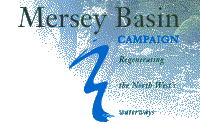PhD RESEARCH SEPT. 2000 - 2003
A PARTICIPATORY PROTOCOL FOR ECOLOGICALLY INFORMED DESIGN WITHIN RIVER CATCHMENTS
| Researcher | |
 |
Joanne Tippett of Holocene Design |
|
Supervisors |
|
 |
John Handley, Groundwork Professsor of Land Reclamation Joe Ravetz, Director of Centre for Urban and Regional Ecology School of Planning and Landscape, University of Manchester, UK |
 |
Walter Menzies, Executive DIrector Mersey Basin Campaign |
Background
The challenge of sustainable development, the interplay of environmental quality, economic vitality and social equity, lies in learning how to meet present human needs and improve quality of life without diminishing the Earth's capacity to provide for the needs of future generations. Engendering cross-sectoral partnerships and engaging community and business participation in planning is seen as playing a key role in sustainable development, exemplified by the emphasis on public participation in Local Agenda 21 and the cross-sectoral role of regional planning as exemplified by strategies such as Action for Sustainability (North West Regional Assembly 2000, Luz 2000). Researchers and practitioners are beginning to discuss the key role of design in creating a sustainable future (Hawken et al '99). Design is the creative process of developing new ideas and possibilities and integrating them within the context of a particular organisation, place and time. In the field of sustainable planning and management, there has been attention paid to increasing public participation in 'integrated assessment' and 'scenario building' (Darier et al '99), but there has been little attention paid to developing a practical protocol for applying principles of sustainability with a communicable and clear process of design. This research project seeks to remedy this deficiency within the context of integrated planning and design for a river catchment.
Aim
The overall aim of this research is to develop a design process based on ecologically informed principles that encourages participation in integrated catchment planning, with a view to developing a tool kit for sustainable development at the landscape scale.
Research
Questions
This poses four interrelated research questions:
- Are there generic principles to guide successful integrated catchment planning?
- What is an effective process of integrating local actions with strategic planning?
- What is an effective process of engaging participation in ecologically informed planning and design at the landscape scale?
- How do these principles and processes fit into a broader theoretical framework?
Research Context
- Level of scale - catchment of major river basin, including several urban areas and industrial sites with a variety of landscape uses and pressures. Good water quality and cycling of water in the landscape are essential for the health of local ecosystems and for human and industrial activities. Designing at a sub-regional, or landscape level, as delineated by a water catchment basin, offers a large enough geographical scale to benefit from whole system optimisation (Hawken et al '99, Johnson '95), at the same time as providing a geographical unit which participants can relate to and comprehend (Forman ’95, Lewis '96). A focus on water provides a useful perspective for integrated thinking and planning, as improving water quality requires cross-sectoral action, including work on material and energy flows in an area, land use pressures and ecological landscape management. A water catchment basin provides opportunities for planning that crosses administrative and political boundaries. The Mersey Basin Campaign provides an excellent example of the value of water catchment management for sustainable development (Handley, Wood and Kidd ’99).
- Research partner and sponsor - Mersey Basin Campaign, a 25 year government initiative and a key factor in the North West region’s objective of a ‘green and pleasant region’. The Campaign was awarded the inaugural International RiverPrize for best practice in Catchment Management in 1999.
- European Union Water Framework Directive – this new legislation requires each Member State to produce an integrated management plan for all of its river basins. These plans must be formulated with a high degree of community and partnership involvement (EU, 2000).
- International comparative study between two catchment areas with similar characteristics. Similarities and differences between the Mersey Basin in the North West of England and the Petaluma River in the Bay Area of California will suggest areas of inquiry and provide useful data for comparative analysis. The two catchment areas have many similar characteristics (e.g. urban developed areas, development pressures on open space, polluting industrial development) and each area has a high level of action focused on participatory sustainable planning. The Mersey Basin Campaign (MBC) in particular is an international model of excellence for the sustainable management of water catchments, as evidenced by being awarded the 1999 International RiverPrize in Brisbane, Australia.
- Preferred research tool - testing the established ‘DesignWays’ method in the catchment planning context. The MBC has successfully co-ordinated action plans and formed partnerships within its geographical area. Their work includes education and community participation in projects, but has yet to extend to community landscape planning. The nominated student, Joanne Tippett, has developed a process for facilitating participation in an ecological planning process. The ‘DesignWays Process’ is a development of the researcher’s thesis entitled A Pattern Language of Sustainability (Tippett '94), written for a First Class Hons. BA in Ecological Design at Lancaster University. During two years in Southern Africa, this theoretical approach was developed into a practical tool. The method has since been refined through project work in the U.K., Germany and the U.S.A.
Objectives
- Develop transferable principles for ecologically informed catchment management from comparative study of successful projects.
- Develop process of ecologically informed participatory design. This will form the basis for a tool kit for sustainable development with potential international applications.
- Provide recommendations to institutional players for increasing
effectiveness of participation and partnership models in ecologically sustainable
planning, with particular emphasis on learning from the successful model
of the MBC.
- Contribute to the theoretical underpinnings of emerging sustainable planning methodologies for long term sustainable development.
Methodology
The methodological strategy is action-based research within a framework of interpretive grounded theory (Stringer, 1999, Strauss and Corbin '90, Hutchinson '98).
- Develop a conceptual framework through a grounded, inductive exploration of three case studies, The Mersey Basin Campaign and its River Valley Initiatives and Petaluma City (California) planning process for integrated water management. This will involve analysis of data from interviews or focus groups with key participants and stakeholders, the organisations’ literature about the projects and organisational structures, educational materials and facilitation tools from the project and planning and design materials, or outcomes of the process.
- Investigate key concepts, derived from the researcher’s previous experience with sustainable planning, in the context of the two case studies. These concepts focus on shifts in planning and organisational thinking emerging from developments in living systems biology and complex systems theory (Naveh 2000, Maturana and Varela '87, Capra '96, Wheatley '92). draft conceptual framework
- Action-based research, the researcher will facilitate a participatory planning process for the Irk Valley Project, using the ‘DesignWays Process’, allowing for a deeper exploration of the conceptual framework. The planning process will include community stakeholders, NGO's involved in local land use decisions and representatives from local businesses. Data gathering will include focus groups or interviews with key stakeholders.
- Synthesis and evaluation of results, analysis and writing up thesis, recommendations for integrated planning and implications for design methodologies and policies.
Dissemination of Results
Results will be disseminated to an academic audience in the emerging field of sustainable planning and to a practitioner audience. Publication of articles in refereed academic journals, such as Urban Studies or Landscape and Urban Planning and presentations at conferences will inform the academic field. The findings will also be written up in reports in non-academic terms. These reports will form the basis for articles pitched at a practitioner audience, which would be published in journals such as Town and Country Planning or The Journal of the Chartered Institute of Water and Environmental Management (CIWEM).
Anticipated Outcomes
This research will inform the debate on the role of landscape and natural resource planning in sustainable catchment management and the role of public participation in planning at a landscape scale. Models of best practice and transferable principles for successful catchment management will be developed and disseminated to practitioners and academics. The MBC envisages that following the research, the ‘DesignWays’ process may be developed into a transferable toolkit for international dissemination through a possible partnership between MBC, the researcher, Manchester University, the City of Brisbane and the private sector.
References
Capra, F. (1996) The Web of Life, Anchor Books, New York
Darier, E., Gough, C., Marchi, B., Funtowicz, S., Grove-White, R., Kitchener, D., Pereira, A. G., Shackley, S. and Wynne, B., 1999, "Between Democracy and Expertise? Citizens' Participation and Environmental integrated Assessment in Venice (Italy) and St. Helens (UK)", Journal of Environmental Policy and Planning, 1: 103-120
EU (2000). Directive Of The European Parliament And Of The Council, Establishing A Framework For Community Action In The Field Of Water Policy. Luxembourg, European Union, The European Parliament The Council.
Forman, R.T.T., 1995, Land Mosaics, The Ecology of Landscapes and Regions, Cambridge University Press
Luz, Frieder, 2000, Participatory landscape ecology ¯ A basis for acceptance and implementation, . Landscape and Urban Planning 50, (1-3) 157-166
Handley, J., Wood, R., Kidd, S., 1999, 'Sustainable Development and Institutional Design: The Example of the Mersey Basin Campaign', Journal of Environmental Planning and Management, 42 (3), pgs. 341-354
Hawken, P., Lovins, A., and Lovins, H., 1999, Natural Capitalism, Little Brown and Company, Boston
Hutchinson, S. A., 1988, 'Education and Grounded Theory', In R. Sherman and R. B. Webb, (Eds.), Qualitative Research in Education: Focus and Methods.
New York, NY: The Falmer Press
Johnson, H. D., 1995, Green Plans, Greenprint for Sustainability, University of Nebraska, Lincoln
Lewis, P. H., 1996, Tomorrow by Design, Regional Design Process for Sustainability, John Wiley and Sons, New York
Maturana, H., and V., Francisco, 1987, The Tree of Knowledge, Shambhala
Naveh, Z., 2000, What is holistic landscape ecology? A conceptual introduction. Landscape and Urban Planning 50, (1-3) pp. 7-26
North West Regional Assembly and Government Office of the North West, 2000, Action for Sustainability
Strauss, A. and Corbin, J., 1990, Basics of qualitative research: grounded theory procedures and techniques. Newbury Park: Sage
Stringer, E. T. (1999). Action Research - Second Edition. Thousand Oaks, Sage Publications.
Tippett, J., 1994, A Pattern Language of Sustainability, B.A. thesis at Lancaster University, www.holocene.net/dissertation.htm
Wheatley, M., 1992, Leadership and the New Science – Learning about organization from an orderly Universe, Berrett-Koehler, San Francisco